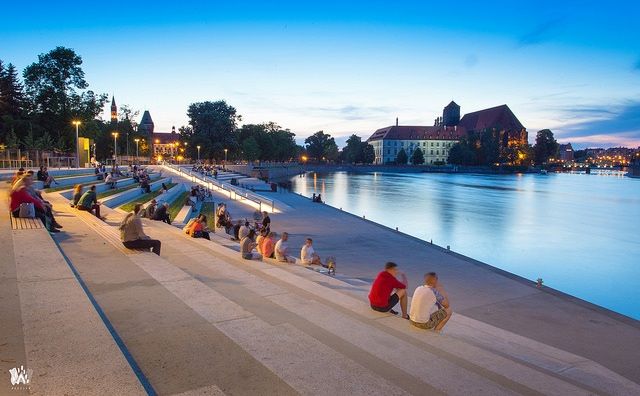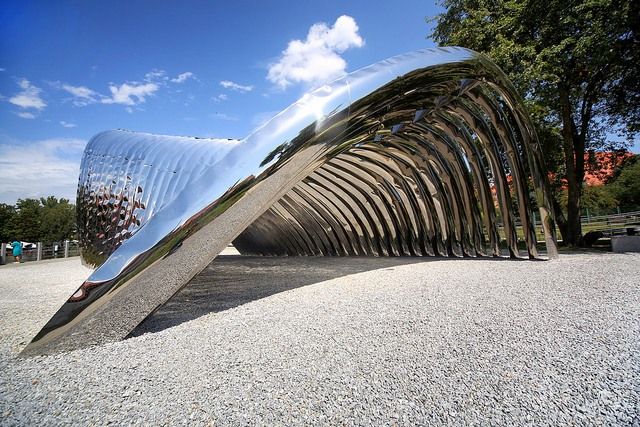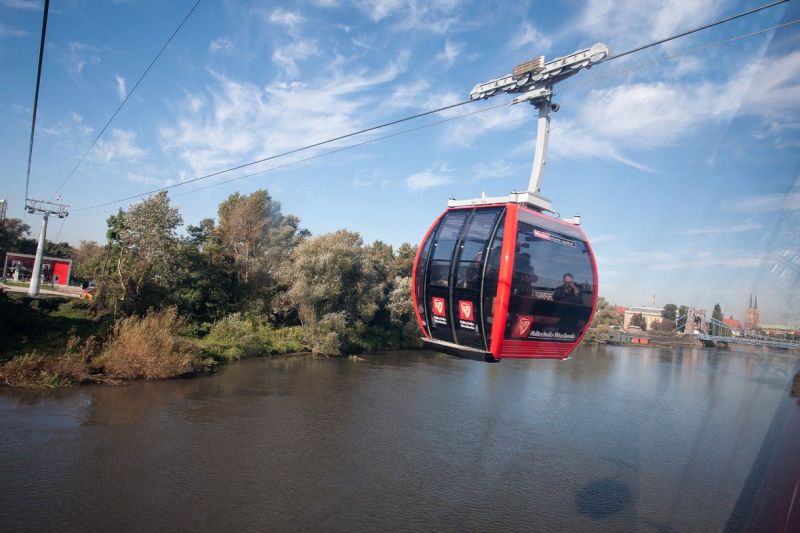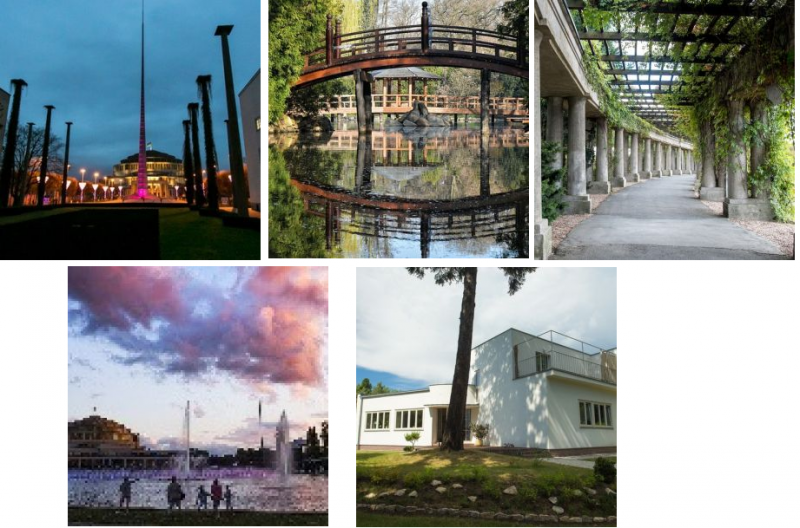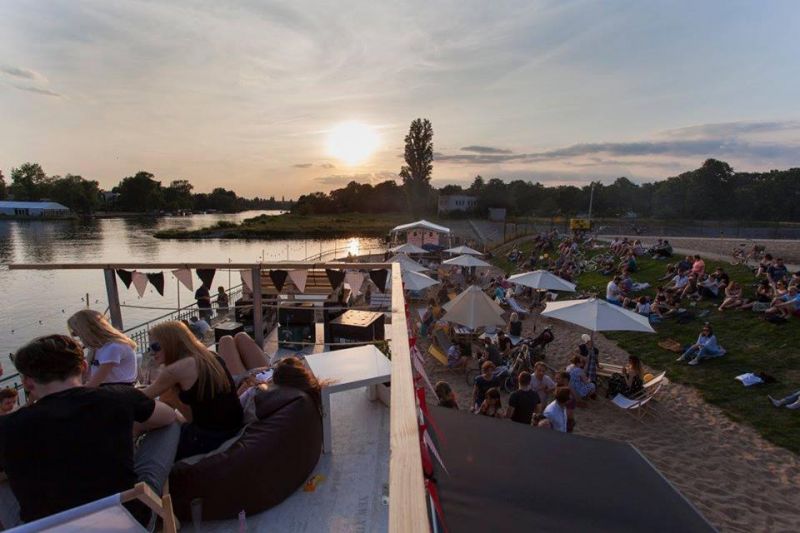Where to walk in Wroclaw
On warm days, going outside is a must. Both Wroclaw inhabitants and tourists have lots of places to walk, watch and admire. Parks and suburban forests, dreamlike gardens and colourful backyards in the downtown, and – primarily – boulevards and promenades on the Oder.
Amphitheatre with a view of Ostrów Tumski
Walking on the banks of the Oder is always a good idea, regardless of the weather. Already in early spring, as soon as the temperature jumped up to several Celsius degrees, Dunikowski Boulevard immediately filled up with lovers of strolls, families with children, and young people who changed clubs for the stairs of the amphitheatre by the water.
In summer and early autumn, the boulevard serves as a site for picnics, outdoor games, food truck rallies and events for families. It is a favourite and popular place among Wroclaw inhabitants and tourists, and the stairs opposite Włostowic Boulevard are an ideal spot to sit down and admire the lazy waters of the Oder and the panorama of Ostrów Tumski.
Nawa on Wyspa Daliowa
If we decide to walk towards Nadodrze, we will come across Nawa on Wyspa Daliowa – the smallest island in the archipelago of downtown islands in Wroclaw.
Appreciated by architecture and design experts from around the world, the shining construction of Nawa by Oskar Zięta intrigues and attracts visitors. It is also a popular place for outdoor photography sessions among Wroclaw inhabitants and tourists.
Colourful backyards in Nadodrze
Going through Wyspa Słodowa, where we can stop to rest and admire a view of the main building and Wyspa Tamka, we will reach ul. Drobnera. It is only two steps away from Nadodrze. Full of stylish tenement buildings and corners, this climatic district changes every season. There is an increasing abundance of atmospheric pubs, bars, cake shops and places worth seeing.
The most interesting of them include colourful backyards at ul. Roosevelta, which are surrounded by spectacular murals created by professional artists and local inhabitant.
100-year-old Grunwaldzki Bridge and shining Manhattan
If we keep sticking to the Oder, we will also come across nice and attractive spots on the way.
The Boulevard of Maria and Lech Kaczyńscy is teeming with life again. From the promenade at the back of the Provincial Office, a view of the Grunwaldzki Bridge, the University Library and Manhattan with shining new façades stretches out. An outdoor couch serves as a convenient stopping point.
A few steps farther, there is a WRO sign – on weekdays, we can often see school pupils and students sitting in the curves of letters, and on weekends, tourists and strollers like taking photographs with the fanciful structure.
Living on the Oder, flying over the Oder
Going through the Grunwaldzki Bridge, we will see an outline of the historic water tower in the distance. Right next to the bridge, the first house on the water in Wroclaw is moored – it is the best proof that the Oder is a good place to live. Passing under Plac Społeczny, we will reach ul. Słowackiego. From there we can watch the house from a close range, although it can be entered only upon the host’s invitation.
– Through the Oławski Bridge (the only stone bridge in Wroclaw that has survived), we will reach Na Grobli. A few steps away from the bridge, there is the Polinka cable railway station. A journey by Polinka across the Oder takes two minutes, giving us an opportunity to admire the Grunwaldzki Bridge, the panorama of Ostrów Tumski and the water tower.
Politechnika Boulevard for relax and water sports lovers
The campus of the Wroclaw University of Technology has grown in beauty in the last few years, also thanks to an imposingly arranged boulevard. It is a convenient area not only for strollers, but also for water sports lovers, families with children and beach volleyball fans.
Szczytnicki Park: green Arcadia
From the Polinka station and Politechnika Boulevard, we will walk only 10 minutes to the Zoological Garden and Szczytnicki Park with an area of over 100 ha. The part of the park beside the Centennial Hall attracts families with older children, because it offers more sightseeing spots.
In the northern part, on the other side of ul. Mickiewicza, there are more dog owners and families with babies. The benefits of this area include large spaces, playgrounds, long alleys and a small number of cyclists.
Architectural gem on the UNESCO list
- The Centennial Hall – the work of the city architect Max Berg, the only Wroclaw building listed as a UNESCO World Heritage site.
- The wooden church of St. John of Nepomuk was erected at the turn of the 16th century. In 1913, it was transferred from Kędzierzyn to Wroclaw as a part of a cemetery art exhibition. Today it is a place of cultural events.
- The multimedia fountain and the Pergola – one of Wroclaw’s greatest attractions. Fountain shows with lights and music attract thousands of spectators every year.
- The Iglica – a 96.3 metres long steel structure weighing 44 tons. It was erected near the Centennial Hall on the occasion of the Recovered Territories Exhibition in 1948.
- The Japanese Garden – one of the most popular walking areas. It was built on the occasion of the World Expo held in Wroclaw in 1913.
- The Four Domes Pavilion – a unique building designed by Hans Poelzig, the current seat of the Museum of Contemporary Art.
- WUWA – an experimental housing estate built in the first half of the 20th century. A popular destination for architecture fans.
Stick to the Oder, see the parks
The Zachodni Park has also gained some new attractions, such as a boulder wall adapted to the needs of the youngest kids. There are many picturesque spots to see in the Millennium Park.
In southern Wroclaw, the horse racing track at Partynice is a popular strolling place. It is pleasant to rest by the water in the Południowy Park. We recommend taking a walk around the Kleciński Park or along the Ślęza River.
And if you have walked every corner of Wroclaw parks, we recommend a visit to Pawłowice at the edge of the city close to Psie Pole. The historic park is surrounded by the 19th-century Korn Family Palace, which belongs to the Wroclaw University of Environmental and Life Sciences today.
If you have not been to the Ratyński Forest yet, you should see it. It is always possible to take a walk on the embankment of the Oder towards the Rędziński Bridge.
Wroclaw inhabitants often choose routes along the Oder for long walks due to the growing number of city beaches – these are good spots for relax and fun.
See city gardens
Also the Staromiejski Garden adjacent to the City Centre Promenade is a perfect shelter from the hustle and bustle of the big city. It is a good place to rest both with small (on a blanket on the big glade) and big children (in the playground and on the carousel with horses).
– The Botanical Garden is a place with a 200-year-long history and a crowd of loyal frequenters. Many people like walking or sitting there particularly in spring, when the garden is only coming to life. From February, the Botanical Garden is open also on weekends.
It is worth seeing the patio in the building at Plac Nankiera, which is occupied by the Faculty of Philologies of the University of Wroclaw. The patio in the building at Piasek is already available, too. It is impossible to resist the charm of the internal garden in the former monastery building of the Museum of Architecture at ul. Bernardyńska.
Discover Wroclaw patios
During a stroll through the Wroclaw Old Town, it is worth seeing city courtyards and patios. The Ossolineum patio in the centre of Wroclaw looks impressive and is a remarkable discovery for many tourists. Equally atmospheric is the garden adjacent to the former monastery building, which is the current seat of the Ossolineum.

Tomasz Wysocki
